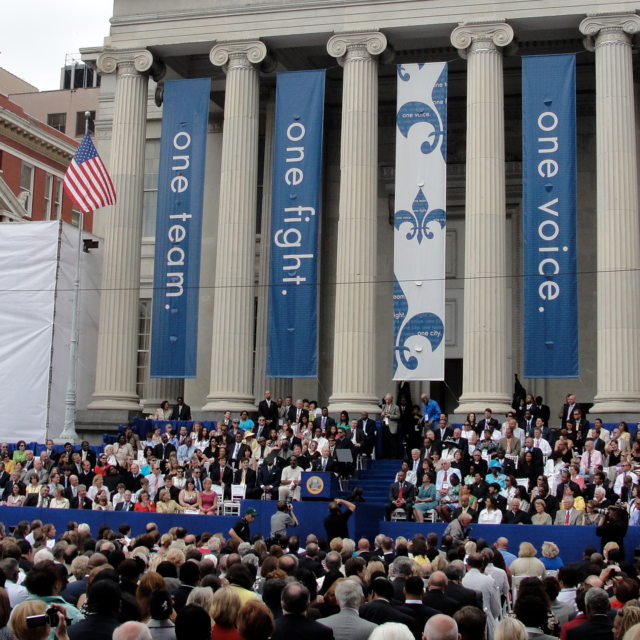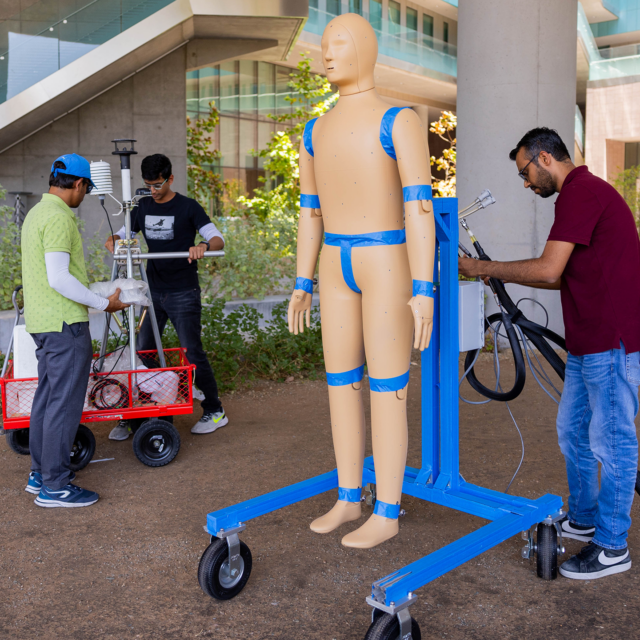This year’s presidential campaigns are giving marked attention to the Ten Across region, the fastest growing and most diverse section of the U.S. Trends suggest this may soon be the youngest region as well, offering prospects for lasting impact on either party’s success for decades to come based on their effectiveness within these communities. The region’s proximity to the U.S.-Mexico border and vulnerability to climate-related disasters present highly visible—and at times polarizing—responsibilities for a prospective presidential administration.
Early voting is well underway ahead of Election Day Tuesday. Media coverage of former President Donald Trump and Vice President Kamala Harris’s potential pathways to victory in the Electoral College has likewise begun in earnest. This is a historically close race, with many polls showing Trump and Harris neck and neck in the nation overall.
And while political polls seem to be losing accuracy even in predicting the results of more widely divergent contests, they remain an important tool in an election period. As James Fallows, author of the Breaking the News newsletter, told Ten Across founder Duke Reiter in a live interview earlier this month, “Polls are both necessary and horrible. They’re necessary because politicians need to have some way to gauge trends of public opinion, et cetera. They’re horrible in their addictive nature for the media in general…[and] people don’t answer phones.”
As we observe this race from the Ten Across region, which boasts 69% of the 250 electoral votes needed to win, some recent history and polling data will help illustrate the influence of the urban-rural divide and growing diversity of this region, especially in an election year.
How Different Electoral Outcomes in the 10X Region Could Decide the Race
Changes in U.S. Census data have created a 2024 Electoral College map that looks slightly different from the one President Joe Biden won in 2020. In the Ten Across region, California lost a vote, while Florida gained one and Texas gained two. Outside of the region, the states that lost a vote include Illinois, Michigan, New York, Ohio, Pennsylvania and West Virginia while Colorado, Montana, North Carolina and Oregon each gained one.
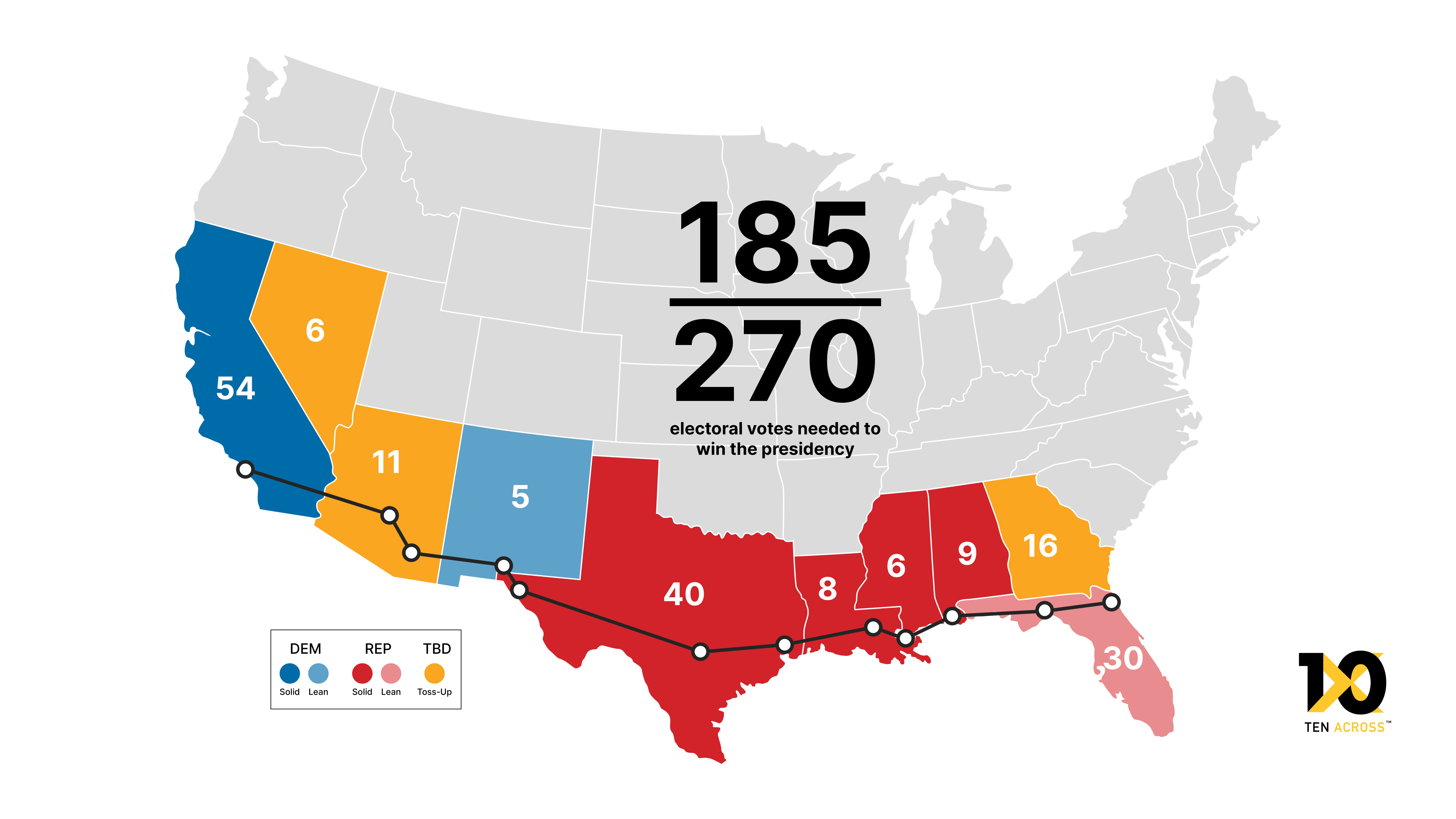
These changes to states’ voting power overall are minor. The real decisive power of the election is currently in the hands of seven battleground states—Arizona, Georgia, Wisconsin, Michigan, Pennsylvania, and Nevada—and how they choose to vote. This was also the case in the previous two election cycles
To understand the Ten Across region’s specific influence in deciding the electoral vote, it helps to consider the results of the last contest between Trump and President Joe Biden. In that race, Democrats flipped Arizona and Georgia and kept Nevada blue. But these victories were achieved on very slim margins—within the range of thousands of votes, rather than the hundreds of thousands that would be seen in a solidly blue or red state.
In the case of the Ten Across region, Trump won Arizona in 2016 by a four-point margin, then lost the state by half a percentage point in 2020. In Georgia, where Trump won by five points in 2016, in 2020 he lost to Biden by just 12,000 votes. Polling in 2024 suggests voting outcomes will be similarly close in these states.
Below are examples of Trump and Harris’s odds of winning the presidency in 2024 if the nation were to replicate 2020 results versus those of 2016, when Republicans successfully won six out of the seven swing states.
2020 Electoral Votes
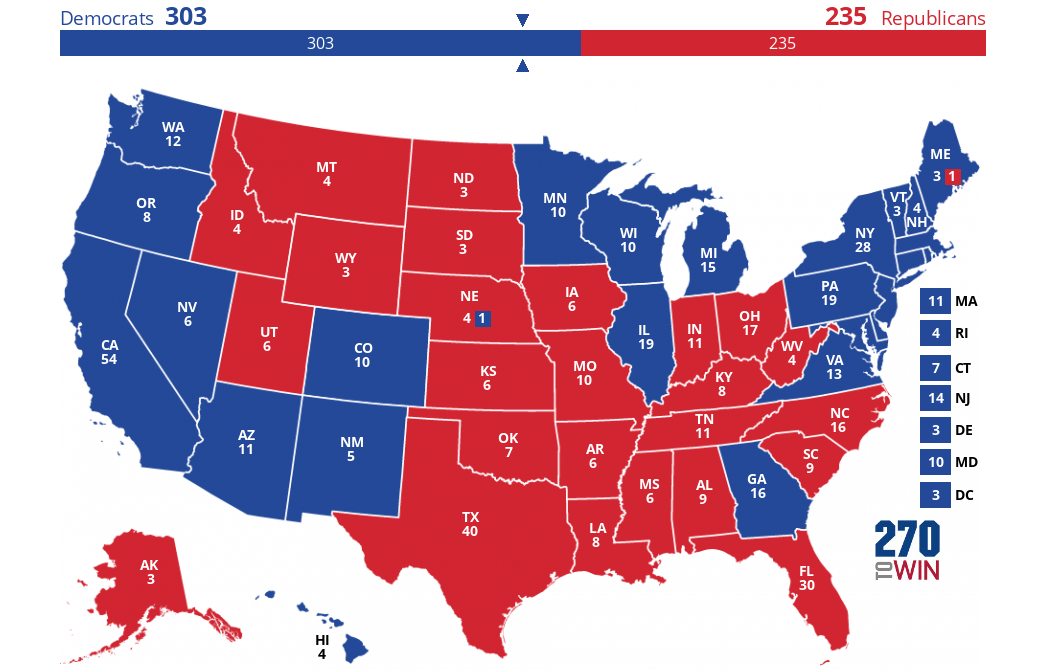
If states vote as they did in 2020 (Democrats flip NV, AZ, GA, PA, WI, MI):
303 for Harris; 235 for Trump
2016 Electoral Votes
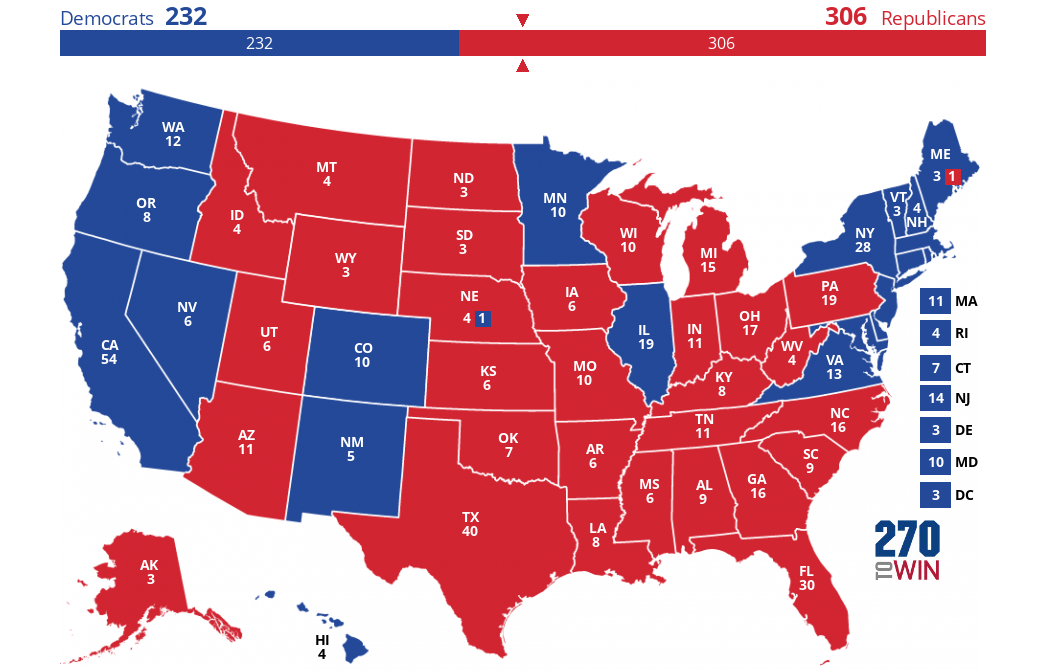
If states vote as they did in 2016 (Republicans flip AZ, GA, PA, WI, MI, NC):
288 for Trump; 250 for Harris
Northern swing states may yet counterbalance the region’s pull if, as The Washington Post and the New York currently project, Arizona and Georgia lean Republican in 2024:
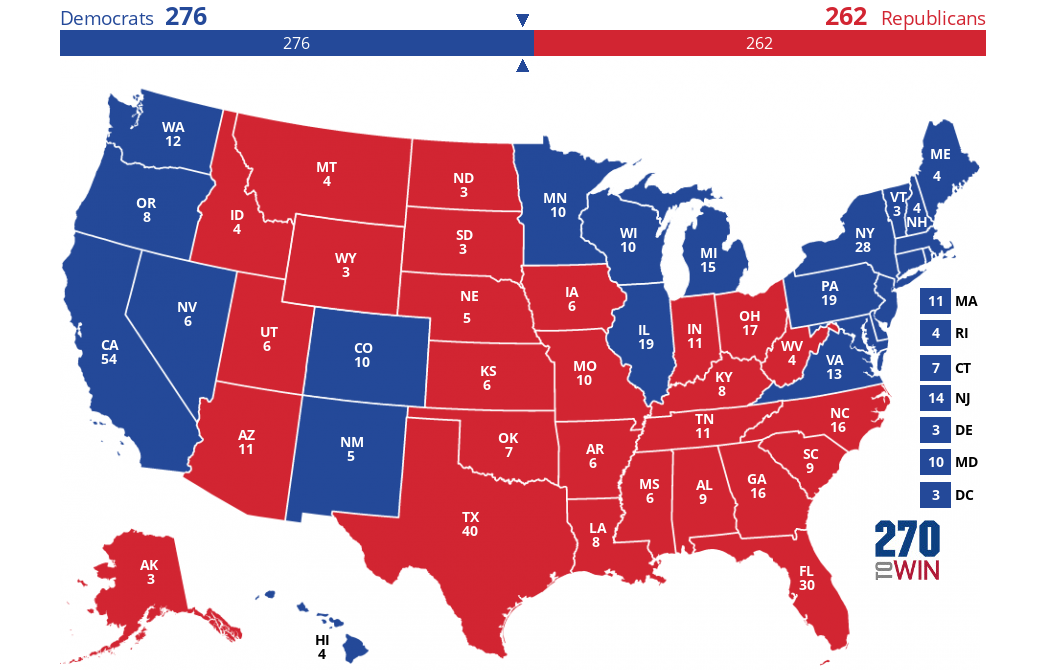
276 for Harris; 262 for Trump
(even if Arizona and Georgia flip for Trump as currently projected) Source: Washington Post
The Ten Across region is the most diverse transect of the country. It’s still hard to tell how it will vote:
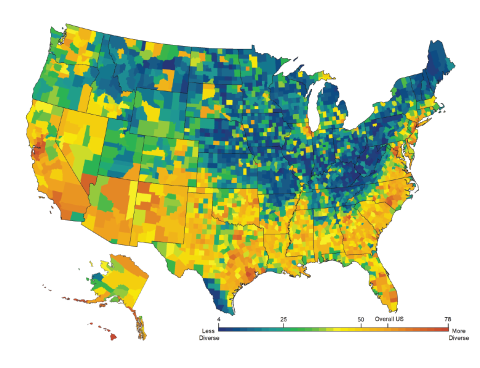
https://carsey.unh.edu/publication/us-population-growth-slows-diversity-grows
The Ten Across region contains three of the largest and most diverse states in the U.S. —significant factors in its politics. More than half of the nation’s Latino population lives here, in California (25%), Texas (19%), and Florida (9%). These three states also represent the largest share of the electoral vote within the Ten Across region (124/185 votes). Several sources have projected that California and New Mexico will likely go to Harris and that Trump will likely claim most of the Southeast, leaving Arizona and Georgia in contention.
Many analyses point to support for Biden among Phoenix and Tucson’s Latino populations as a major factor in flipping Arizona in 2020 by just 11,000 votes. This was an extension of a nationwide trend, with Biden receiving 61% of the Latino vote that year. Polls show Trump is currently ahead in Arizona, but only by two points, which is well within the margin of error.
According to a Pew Research Center survey from Aug 26-Sep 2, 2024, Harris led Trump by 18 percentage points among Latino registered voters nationally. This factor suggests that Arizona may still be a race to watch, especially given that there are 36.2 million Latinos eligible to vote this year—double the 2020 number (14.3 million). Latino voters are now the second largest electorate by race and ethnicity, ahead of Black and Asian American voters.

At 92%, Democratic support among Black voters was even higher in 2020 than among Latinos. More than half of the nation’s Black population lives in the South, in Texas (3.9 million), Florida (3.8 million), and Georgia (3.6 million). Although the South overall has reliably voted Republican in 2016 and 2020, Georgia voted Democrat for the first time in 30 years when Biden won the state due to growing support in the state’s metros and suburban areas over the preceding eight years.
Since Harris began her campaign just three months ago, she seems to have struggled to win this same level of support among Black voters, specifically young male voters. An NAACP poll found that one in five voters among this electorate leaned toward Trump. However, a more recent poll suggests she is gaining ground. This could help Harris secure the state of Georgia, where the Black electorate has seen a four-percentage point increase since 2012. Even the slightest shifts among certain demographics will be significant in this race where mere thousands of votes can flip a state one way or the other.
The urban-rural divide and growing debate over the electoral college
There is at least one consistent element to voter trends in recent history. Densely populated urban areas tend to choose the Democratic nominee, while Republicans perform much better in rural counties. This analysis from The Washington Post shows how the urban-rural divide has especially presented itself in the seven swing states over the last three election cycles.
Democratic turnout in Phoenix and Atlanta, the 5th and 37th largest cities in the U.S., allowed Biden to win historically red Arizona and Georgia in 2020. Eyes are on these cities once more in the 2024 race. While the potential for large, progressive metros to shift the politics of entire states has been popular in analysis and news coverage, Republicans’ momentum in rural counties has been equally influential. In the north, Pennsylvania had not supported a Republican president in almost 30 years until Trump won the state in 2016. Today, it is the closest and potentially most decisive battleground for the two candidates.
The Electoral College system was created as a way to provide compromise between two camps of Constitutional delegates, one that desired a straight popular vote and one that wanted Congress to elect the President. Today, it seems to impose a balance of power in the U.S. urban-rural divide, at least in elections. That said, two of the five times in U.S. history that a presidential candidate has won the popular vote but lost the election have occurred in just the last three contests.
The Electoral College is the center of an increasing national debate over how it distributes power throughout the nation—one that will be greatly influenced by the politics of the Ten Across region.
For more Ten Across 2024 Election-related content, follow these links:
“James Fallows on How the News Media Influence U.S. Democracy and Election” (PODCAST | VIDEO)
“Waiting in Line to Vote: Effective Administration is Key to Short Wait Times, Election Trust” (APM Research Lab/Ten Across collaboration)

